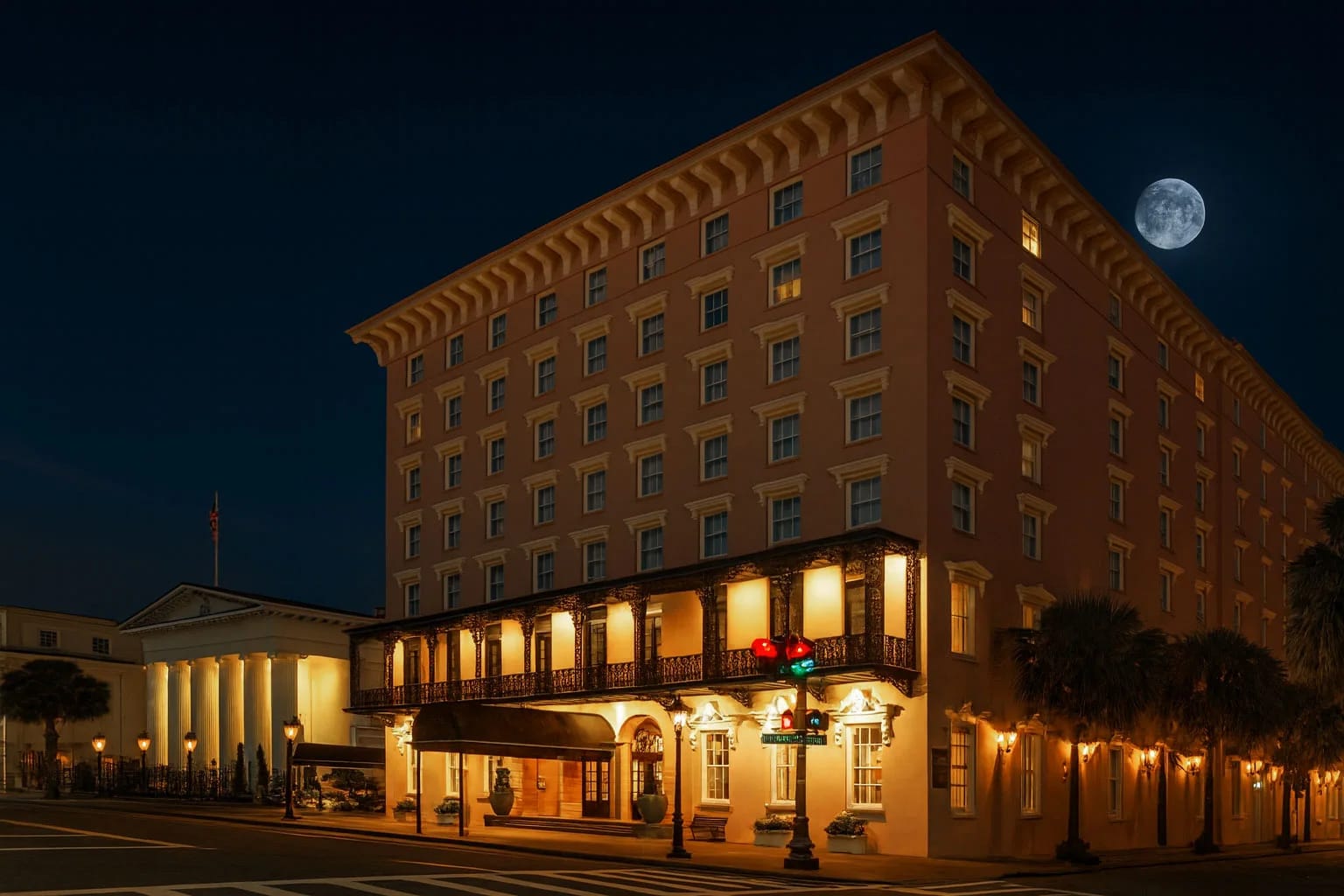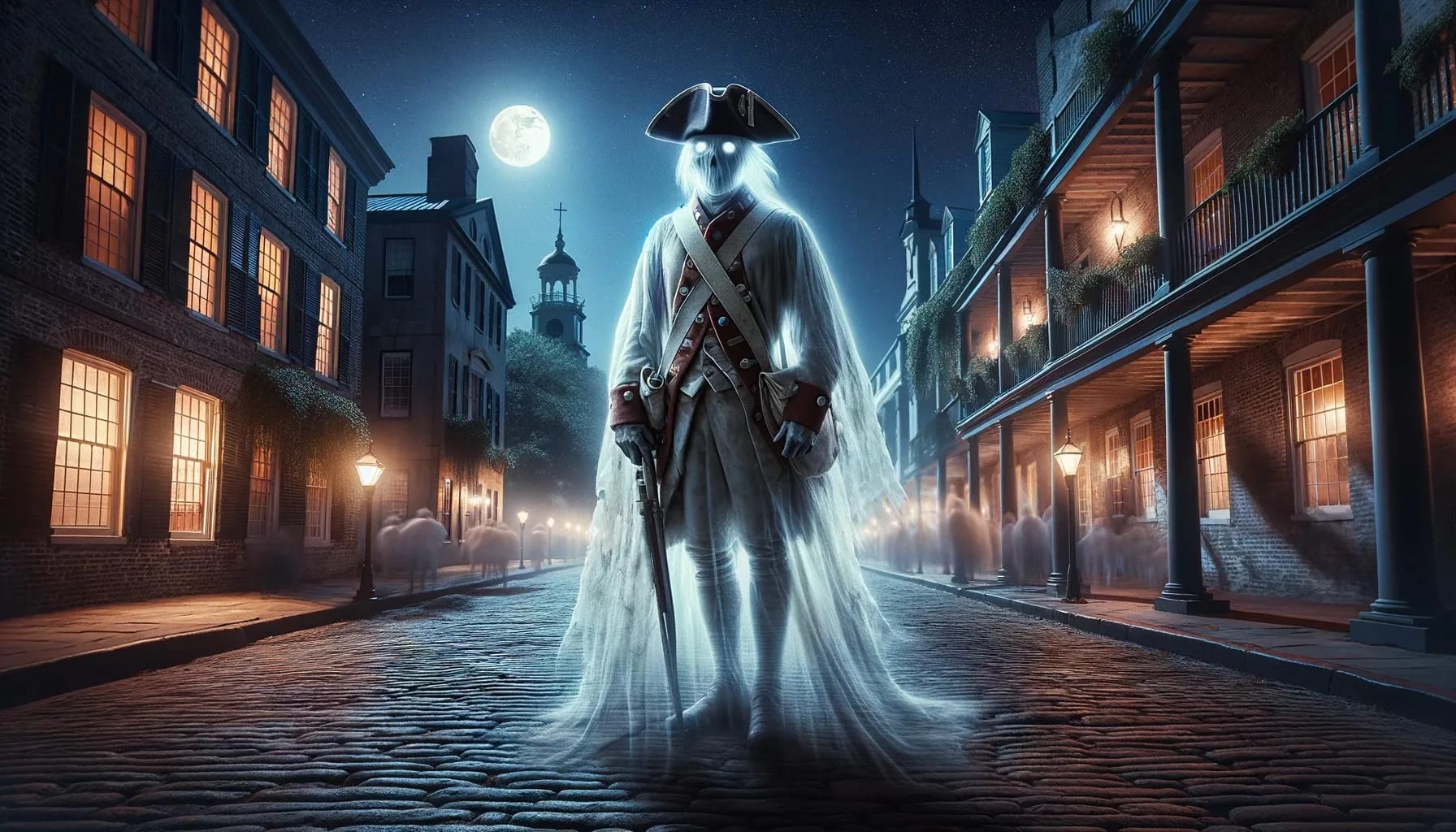The Haunted Mill House Hotel
115 Meeting Street, Charleston, South Carolina
The Mill House Hotel stands as a testament to Charleston's industrial past, beautifully converted from a working rice mill into a modern boutique hotel. The building's exposed brick walls, original beams, and industrial architecture create a unique ambiance that attracts visitors from around the world.
But beneath the hotel's stylish exterior lies a darker history—one of backbreaking labor, human suffering, and untimely deaths. Rice mills were dangerous places in the 19th century, and this building witnessed more than its share of accidents and tragedies. Today, many believe the spirits of those who worked and died here remain, unable to rest.
The History of the Rice Mill
Charleston's wealth in the 18th and 19th centuries was built largely on rice cultivation. The city's rice mills processed the 'Carolina Gold' rice grown on plantations throughout the Low Country, preparing it for export to markets around the world.
The Rice Industry
Rice cultivation in the Charleston area began in the late 1600s and quickly became the region's most profitable crop. By the mid-1700s, South Carolina was the largest rice producer in the Americas, and Charleston was its processing and shipping center.
Rice mills like the building that now houses the Mill House Hotel were essential to this industry. Here, rice was hulled, polished, and prepared for export. The work was grueling, dangerous, and performed primarily by enslaved African Americans who had been chosen specifically for their knowledge of rice cultivation—knowledge they brought with them from West Africa.
The mill operated using a combination of water power and manual labor. Workers toiled in oppressive heat and humidity, surrounded by dangerous machinery. Accidents were common, and the death toll among mill workers was significant.
The Civil War and Aftermath
During the Civil War, Charleston was under siege for much of the conflict. The rice industry, already struggling, collapsed entirely after the war ended. The emancipation of enslaved workers and the destruction of the plantation system meant that rice production in the Low Country never recovered to its antebellum levels.
Many rice mills, including this one, fell into disuse and disrepair. The building sat abandoned for decades, slowly deteriorating while Charleston struggled to rebuild its economy and identity in the post-war South.
During this period of abandonment, the building gained a reputation as a place to be avoided—locals reported strange sounds coming from the empty mill, and some claimed to see figures moving in the windows of the derelict structure.
Conversion to a Hotel
In the late 20th century, as Charleston experienced a renaissance and historic preservation became a priority, developers recognized the potential of the old rice mill. A sensitive restoration preserved the building's industrial character while converting it into a boutique hotel.
During the renovation, workers reported numerous strange occurrences—tools that moved on their own, unexplained cold spots, and the feeling of being watched. Some workers refused to work alone in certain areas of the building, particularly in the basement where the heaviest machinery once operated.
When the Mill House Hotel opened, the paranormal activity didn't stop. In fact, many guests specifically seek out the hotel because of its haunted reputation, hoping for their own supernatural encounter.
The Ghosts of the Mill House Hotel
The Mill House Hotel has earned a reputation as one of Charleston's most actively haunted hotels. The paranormal experiences reported here are diverse and well-documented, with both guests and staff witnessing unexplainable phenomena.
The Phantom Worker
The most frequently reported apparition at the Mill House Hotel is that of a man in work clothes from the 19th century. Witnesses describe him as appearing to be in his 30s or 40s, wearing rough clothing and sometimes carrying what looks like a heavy sack.
This spirit has been seen:
- Walking through the hotel's hallways, seeming to follow an old route through the building
- Standing near windows, looking out as if watching for someone
- In the basement area, near where the mill's machinery once operated
- Passing through solid walls where doorways once existed
What's particularly striking about this apparition is that he never acknowledges modern observers. He appears completely absorbed in his task, as if replaying a scene from his life over and over—a residual haunting captured in the building's very structure.
One guest reported waking at 3 AM to see this figure standing at the foot of her bed, holding his cap in his hands. She described feeling no fear, only an overwhelming sense of sadness emanating from the spirit. When she spoke to him, he looked directly at her with an expression of profound sorrow, then faded away.
Room 301
Room 301 has earned a particular reputation for paranormal activity. Guests staying in this room have reported:
- Waking to find their belongings moved or rearranged
- The sensation of someone sitting on the edge of the bed
- Hearing whispered conversations in the middle of the night
- Cold spots that move around the room
- The bathroom door opening and closing on its own
- A persistent feeling of not being alone
One particularly unsettling account comes from a couple who checked out in the middle of the night. They reported that something—or someone—repeatedly tugged at their blankets, trying to pull them off the bed. When the husband sat up and turned on the light, he clearly saw the impression of a hand on his wife's side of the bed, as if someone had been sitting there. They left immediately and refused to return.
Hotel staff are now upfront about Room 301's reputation and give guests the option to change rooms if they're uncomfortable with the paranormal activity.
The Weeping Woman
Guests and staff have reported hearing the sound of a woman crying, particularly in the early morning hours. The sobbing seems to come from nowhere and everywhere at once, echoing through the hallways in a way that makes it impossible to locate the source.
Several guests have reported following the sound of crying, trying to help what they assumed was a distressed fellow guest, only to have the sound fade away as they approached. Others have called the front desk to report a woman crying in a nearby room, but when staff investigate, the rooms are empty.
Some paranormal researchers believe this may be the spirit of a woman who lost her husband or son in a mill accident. The sound of her grief, they theorize, has been absorbed by the building itself, replaying on some eternal loop.
The Basement Activity
The hotel's basement—where the heaviest and most dangerous machinery once operated—is considered by staff to be the most haunted area of the building. Many refuse to go down there alone, and even the most skeptical employees admit to feeling uneasy in the space.
Reported phenomena in the basement include:
- The sound of heavy machinery operating, though all original equipment was removed long ago
- Voices speaking in languages that sound like West African dialects
- Shadow figures moving along the walls
- A overwhelming sense of sadness and oppression
- Temperature drops of 20 degrees or more
- The smell of rice dust, even though no rice has been processed here in over a century
One maintenance worker reported seeing what he described as at least a dozen shadowy figures standing in a line in the basement, as if waiting for something. When he turned on his flashlight, they all vanished simultaneously.
Paranormal investigators who have studied the basement believe it may be a site of residual energy—the pain, fear, and exhaustion of those who labored there has somehow been imprinted on the location itself.
Unexplained Sounds
Throughout the hotel, guests report hearing sounds that don't match the building's current use:
- Heavy footsteps in hallways when no one is there
- The creaking and groaning of machinery that no longer exists
- Voices calling out in the night
- The sound of something heavy being dragged across floors
- Rhythmic pounding or hammering
These sounds are most commonly reported between 2 AM and 4 AM—the hours when the mill would have been at its quietest, but when night shift workers would still have been laboring.
Security cameras have occasionally captured audio anomalies that match these reports, including one recording that clearly captured the sound of someone saying 'Help me' in an empty hallway.
Electronic Disturbances
Modern electronics seem particularly susceptible to interference at the Mill House Hotel:
- Cell phones and cameras draining their batteries rapidly in certain areas
- Televisions and radios turning on and off by themselves
- Lights flickering or dimming without electrical cause
- Electronic room keys failing to work, then suddenly working again
- Phones ringing with no caller on the line
One guest reported that her phone took several dozen photographs while sitting on her nightstand—all of the same spot on the wall. When she reviewed the images, they showed what appeared to be a shadowy figure slowly materializing, then fading away over the course of the photos.
Staying at the Mill House Hotel
The Mill House Hotel welcomes guests who are interested in both its historic charm and its paranormal reputation. The hotel is located at 115 Meeting Street in Charleston's historic district.
For those interested in experiencing the paranormal side of the hotel:
- Room 301 is the most actively haunted room and can be requested (though it often books up quickly)
- The hotel staff are knowledgeable about the haunting and happy to share stories
- Late night or early morning hours see the most activity
- Be respectful of other guests who may not be seeking paranormal experiences
The hotel combines modern amenities with historic character, offering a unique place to stay whether you're hoping for a ghostly encounter or simply appreciating Charleston's architectural heritage.
To learn more about the Mill House Hotel and other haunted locations in Charleston, join one of our Charleston Ghost Tours. Our guides will share the history and hauntings that make this one of America's most supernaturally active cities.

A converted rice mill where the spirits of workers continue their eternal labor


